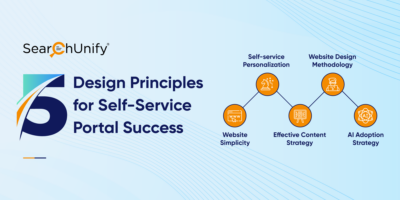
In the realm of information retrieval, two powerful approaches stand out: structured and unstructured search. Structured search harnesses the capabilities of Artificial Intelligence (AI) and Machine Learning (ML) to decipher user intent, context, and preferences, ushering in a new era of search accuracy and user experience. Meanwhile, unstructured search is gaining prominence for its ability to navigate complex, diverse data formats, extracting insights from sources like text, images, and multimedia.
In this blog, we will take a closer look at the transformative potential of structured search. Let’s get started.
Recent studies have shown that structured search has been found to improve the accuracy of search results and increase click-through rates by 30%. This means no more sifting for gems (or irrelevant results) in the rubble. How come, you may ask?
Structured search leverages the power of Artificial Intelligence (AI) and Machine Learning (ML) to understand intent, preferences, and context which makes it crucial for search experience. In fact, structured search is a game-changer in the e-commerce realm, enabling personalized product recommendations that enhance your shopping experience. But its impact extends far beyond that. From enterprise search space to healthcare to financial institutions, structured search revolutionizes anything and everything.
So, fasten your seatbelts to say goodbye to information overload and embrace an intuitive, personalized search journey with structured search. Read on to learn more about how it transforms enterprise search for good.
What is Structured Search?
Structured search refers to a method of retrieving and organizing information from structured data sources such as databases, tables, or other structured formats. Unlike traditional search, which is based on keyword matching, structured search involves querying data based on specific attributes, fields, or criteria.
Also, in structured search, the data is typically organized in a predetermined schema or format, allowing for efficient retrieval and filtering of information. This data can then be indexed or stored in a way that enables faster search and retrieval operations.
But what goes under its hood to deliver the outcomes/results that users seek?
Explore the inner workings to know!
Techniques Used in Structured Search
Unlocking the potential of structured search systems relies on the capabilities of AI and ML algorithms. Let’s delve into the key components driving their success:
-
Natural Language Processing (NLP)
In the context of structured search, NLP techniques are essential for extracting meaning from user queries, understanding intent, and deciphering complex language constructs.
NLP algorithms analyze the syntactic and semantic structure of sentences, allowing search systems to grasp the nuances of human language. This enables structured search systems to accurately interpret user queries and deliver more contextually relevant search results. -
Machine Learning Algorithms
Machine Learning algorithms are the backbone of structured search systems. They enable search systems to learn from user behavior, improve search relevancy over time, and adapt to changing user preferences. This is done by analyzing patterns in user queries, click-through rates, and other relevant signals to refine search results, thus enhancing the accuracy of search results and delivering a personalized search experience. There are mainly three types of ML algorithms, which include:a. Ranking Algorithms
Ranking algorithms play a crucial role in structured search systems. These algorithms determine the order in which search results are presented to users. ML-based ranking algorithms leverage historical search data to understand user preferences and deliver more relevant results.
b. Collaborative Filtering
Collaborative filtering is a popular ML technique used in the structured search to provide personalized recommendations. It analyzes user behavior and preferences to suggest relevant items based on similar users’ actions.
c. Content-based Filtering
Content-based filtering is another ML technique employed in structured search systems. It focuses on analyzing the characteristics and attributes of items to make recommendations based on user preferences.In structured search, content-based filtering can analyze the properties of documents, products, or other data entities to identify similar items that match the user’s interests. By examining features such as keywords, metadata, or attributes, content-based filtering can provide relevant search results that align with the user’s preferences.
-
Deep Learning
Deep learning is a subset of ML that utilizes artificial neural networks with multiple layers to process complex data representations. In structured search, deep learning models are used for tasks such as natural language understanding, image recognition, and recommendation systems. -
Feedback Loop
An essential aspect of AI and ML in structured search is the feedback loop. This loop enables the search system to continuously learn and improve based on user feedback and interactions.
When users interact with search results by clicking, liking, or rating items, the search system gathers valuable data that is used to refine the search algorithms. This feedback loop helps the system adapt to evolving user preferences and improve the overall search experience.Additionally, it is a crucial element in achieving personalized search results, as it allows the system to learn from individual user behavior and tailor the search results accordingly.
Advantages of Structured Search
Structured search offers numerous benefits for businesses, revolutionizing the way they access, analyze, and utilize data. Let’s explore in detail the key advantages that structured search brings to the table:
-
Enhanced Search Relevancy and Accuracy
It significantly improves the precision and recall of search results. By understanding the underlying structure and context of data, structured search systems can deliver more accurate and contextually relevant search outcomes. This means users spend less time sifting through irrelevant results and more time finding the information they need, leading to increased productivity and improved user satisfaction. -
Improved Data Insights and Decision-Making
By analyzing the structure and relationships within the data, structured search enables businesses to gain deeper insights and make data-driven decisions. It helps uncover hidden patterns, correlations, and trends that may have remained unnoticed with traditional keyword-based searches. This empowers organizations to extract valuable insights, identify market trends, understand customer behavior, and make informed strategic decisions. -
Personalized User Experiences
One of the significant advantages of structured search is its ability to provide personalized search experiences. By leveraging AI and ML algorithms, structured search systems can analyze user behavior, preferences, and historical data to deliver customized search results. This personalization enhances the user experience, increases engagement, and fosters customer loyalty. -
Efficient Knowledge Management
Structured search simplifies knowledge management by providing efficient access to vast amounts of information. In organizations with extensive data repositories and knowledge bases, structured search enables employees to quickly find relevant documents, research papers, or internal resources. This streamlines workflows, saves time, and promotes knowledge sharing culture. -
Improved Customer Support
Structured search has a profound impact on customer support and service. By enabling customer service representatives to access relevant information quickly, it empowers them to provide timely and accurate assistance to customers. This results in improved response times, higher customer satisfaction, and reduced support costs. -
Regulatory Compliance and Risk Management
Structured search plays a crucial role in industries with strict regulatory requirements, such as finance and healthcare. By effectively organizing and retrieving data, it facilitates compliance with regulatory standards and ensures sensitive information is secure. -
Competitive Advantage
Adopting structured search provides businesses with a competitive advantage in the market. By leveraging the power of AI and ML in enterprise search, organizations can unlock valuable insights, make informed decisions, and stay ahead of the competition.
Embracing the Future: Exciting Trends in Structured Search
The future of structured search is bright, owing to the ongoing advancements in AI and ML. Here are some exciting trends to watch out for:
-
Natural Language Understanding (NLU)
NLU aims to enhance the capabilities of structured search by enabling search systems to understand and respond to natural language queries more accurately. As NLU technology evolves, users will experience more conversational and intuitive search interactions. -
Knowledge Graphs
Knowledge graphs are powerful tools that represent information and relationships in a structured manner. Integrating knowledge graphs with structured search can enhance search accuracy, enable complex query understanding, and provide richer search experiences. -
Explainable AI
Explainable AI techniques are gaining importance, particularly in critical domains such as healthcare and finance. Structured search systems that provide transparent and interpretable results will be crucial in building trust and confidence in AI-powered search solutions.
Final Thoughts
So, embrace the power of structured search and unlock the hidden value within your data. The possibilities are limitless, and the rewards are significant.
Get ready to soar to new heights of success as you unleash the full potential of structured search in your organization.


















